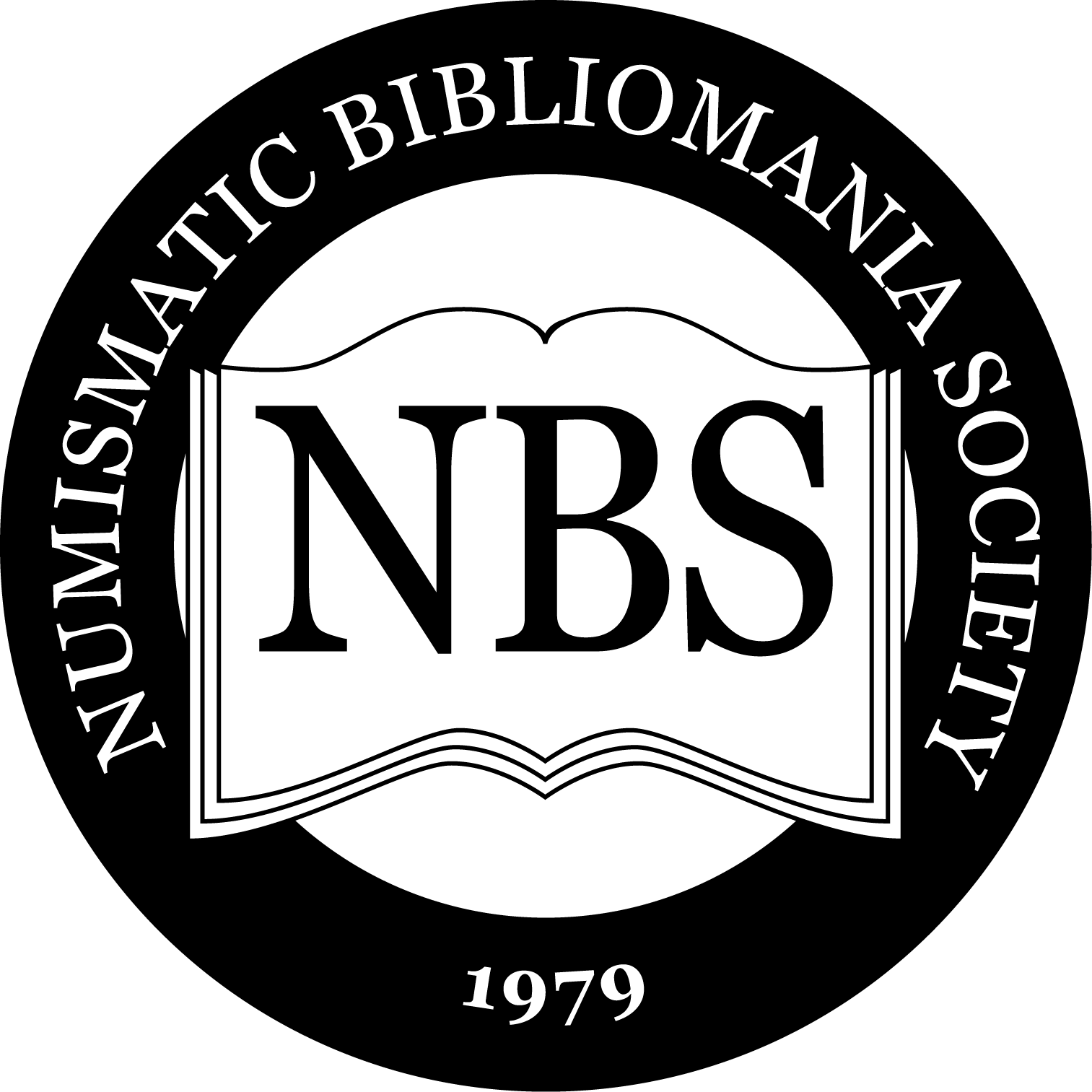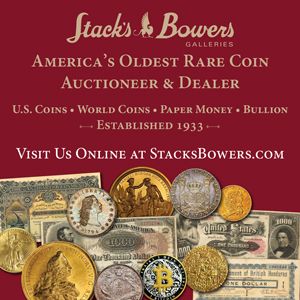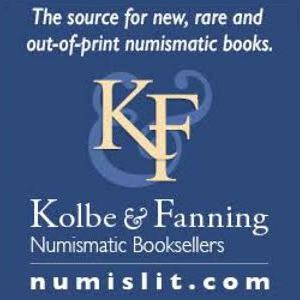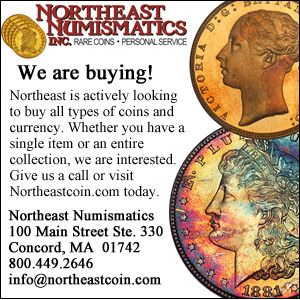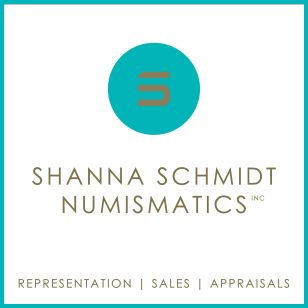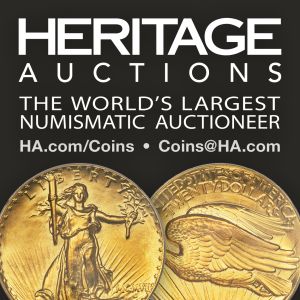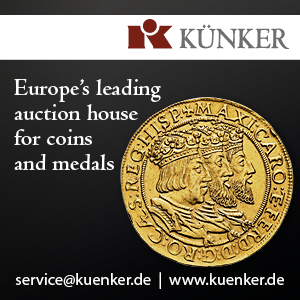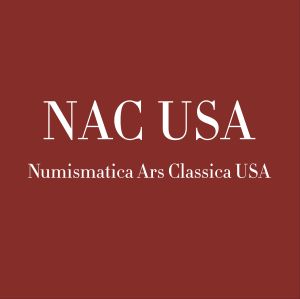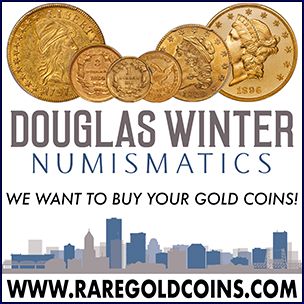The Foote Counterfeit Detector and Armand Champa
|
|
Armand Champa will be remembered in numismatics for the astounding literature collection he formed, the extensive binding and conservation work he commissioned, and his willingness to provide researchers accessibility to his collection. During a trip to Mr. Champa's home in 1993, I discovered a copy of a rare counterfeit detector by Henry C. Foote: The Universal Counterfeit and Altered Bank Note Detector, at Sight. [Fourth Edition-Fifth Thousand, New York, 1853]. In addition to the book, Mr. Champa had correspondence with other bibliophiles regarding the book and tip in plate. The material was loaned to the writer as a starting point on counterfeit detector research. The following is the first in a series of planned articles on counterfeit detector literature.
Counterfeiting of paper money was a rampant problem during the colonial currency, state bank note, and national bank note eras. A genre of material collectively referred to as "counterfeit detectors" emerged during the 19th century to protect businesses and individuals from abusive distribution of fraudulent money. Counterfeit detector literature can be divided into five major categories: Bank note lists and reporters; autographical detectors; descriptive lists; photographic detectors; and educational "methods" and "rules":
Bank note lists and reporters first emerged in the 1810s as a means to list issued (genuine) banknotes and discount rates. As time progressed, the publications expanded to include lists of counterfeit and spurious banknotes. Bank note reporters typically arranged the information by state, bank, and banknote denomination. The text provides a list of banknotes and/or counterfeits after issuance and detection in circulation without illustrations. As such, these publications were very ineffective, post-distribution identification aids. The professional counterfeiter could select a bank and denomination, prepare counterfeit notes, travel to a different state, and distribute the notes with limited chance of being caught. William H. Dillistin's work Bank Note Reporters and Counterfeit Detectors, 1826-1866 [NY: ANS, 1949] provides historical background of the firms and publications of this genre. Collectible titles include Bicknell's Counterfeit Detector and Bank Note List [Philadelphia, 1832-1857], Clark's New-England Bank Note List and Counterfeit Bill Detector [Boston, 1838-1845], John Thompson's Bank Note & Commercial Reporter [New York, 1848-1853], and Connecticut Bank Note List and City of Hartford Monthly Advertiser [Hartford, 1847-1860]. While individual issues appear in literature auctions occasionally, runs or complete sets are prohibitively rare. The American Numismatic Society library houses one of the finest known collections of this material.
Autographical detectors provide a compilation of bank office signatures as they appear on genuine bank notes. The concept was to detect counterfeits by comparing authentic signatures with those appearing on banknotes; a difficult approach even in today's high tech society. Only three autographical detectors were published, the most widely known of which is John Thompson's The Autographical Counterfeit Detector [New York, 1849-1853]. According to Dillistin, "While the facsimile signatures presented in this detector were of great value to those handling State bank notes who might question the genuineness of signatures appearing thereon, they were no doubt of inestimable value to the swindler and crook engaged in counterfeiting such notes." Autographical detectors are rare with only a few numismatic literature auction appearances cited for Thompson's. No sales records are known for Taylor's Signature Examiner or Charles & Leonori's (Late Taylor's) Signature Examiner.
Descriptive lists provide a list of bank notes, their design elements, and layout. A bank or merchant receiving a note could compare the detailed listing to the note presented. The first work of this genre is Dye's Bank Note Plate Delineator [1855]. J. Tyler Hodges copied Dye's format in Hodges' New Bank Note Safe-Guard [New York, 1857-1865]. Dillistin notes that "there can be no question that Hodges' publication was originally prepared from the identical plates used by Dye." John Gwynne and Clarence Day published The Descriptive Register of Genuine Bank Notes [New York: 1859-1866]. Undated supplements for Gwynne and Day's register were issued between editions of the book. The Gwynne and Day preface states it is "now very well understood by merchants and tradesmen in this country, that accurate descriptions of all genuine bank notes are indispensable as a means of detecting spurious and altered or raised bills."
John Thompson issued the Bank Note Descriptive List [New York, 1859-1867]. Other minor descriptive list publications were emitted in Chicago, Cincinnati, Detroit, New York, and St. Louis. Of note are two publications from Pittsburgh. The first entitled Description of Genuine Bank Notes published by the Kennedy Review Office [1857], employed a distinctly similar format to Gwynne & Day. The other published by Kennedy and Brother of Pittsburgh is the sole counterfeit detector discovered printed in German entitled Kennedy's Fac Simile, Ein Supplement Zu ihrem Vereinigte Staaten Banknoten Kenner [c1853]. The genre of descriptive list material is rarely available for sale.
Naramore's United States Treasury and National Bank Note Detector [Bridgeport, CT, 1866] is the single photographic counterfeit detector. The work consists of 18 individual photographs: U.S. Notes ($1, $2, $5, $10, $20, $50, $100, $500, and $1000) and National Bank Notes ($1 Pittsburgh National Bank of Commerce, $2 Washington National Bank of Boston, $5 National Union Bank of Swanton, Vermont, $10 Second National Bank of Sandusky, Ohio, $20 New York National Exchange Bank, $50 New York National Exchange Bank, $100 New York National Exchange Bank, $500 Manufacturers National Bank of Philadelphia, and $1000 Fourth National Bank of City of New York). The 18 photographic images of unsigned proof sheets were issued in four formats: Individual 10 x 6.3 cm. cards issued in a printed cardboard box; individual cards mounted on heavy stock issued in a morocco pouch; a single sheet with the photographs arranged 3 x 6; and a single sheet with a brass eyelet for hanging. According to Charles Davis, this represents the earliest use of photographic technology in numismatic literature. The Naramore work was issued sans text, greatly limiting its usefulness. The morocco pouch and full sheet Naramore versions are prohibitively rare. The version of 18 cards can be secured occasionally, but almost always lacks the cardboard box. Most cardboard boxes seen are in a poor state of preservation often lacking the top and bottom flaps. For an extensive illustrated history of the Naramore work, see Raphael Ellenbogen's article "The Celebrated Naramore Bank Note Detector Cards" (Paper Money, Jan./Feb. 1997).
Educational "Methods" and "Rules"
The exhaustive variety of banknotes in circulation during the Wildcat Banking, Treasury Note, Greenback, and National Bank Note eras challenged bankers, merchants, and consumers to continuously check banknotes presented in payment for authenticity. Bank note lists and reporters, autographical counterfeit detectors, descriptive lists, and the photographic detector were all employed by individuals to protect themselves. However, numerous people were swindled, cheated, lied to, and taken advantage of due to the complexity and expansiveness of counterfeiting. To combat this chilling commerce risk, a fifth genre of counterfeit detectors emerged to educate individuals by providing methods and/or rules to identify counterfeits. The theory was possession of knowledge regarding the engraving, layout, and printing processes for both genuine and counterfeit notes would enable individuals to determine if a note was counterfeit upon visual examination.
The first work of this genre is Perkins Bank Bill Test [Newburyport, MA, 1809]. The publication provides a working knowledge of his patented Permanent Steel Plate and Stereotype Steel Plate engraving processes and methods to check for genuine notes. Perkins' processes provided the basis for the transfer press used by subsequent engravers. He received the support of the Commonwealth of Massachusetts to implement his approach as evidenced by the following proclamation: "no bills of the denomination of One, Two, Three, Four, and Five Dollars, shall be issued or emitted by the President, Directors, and company of any Bank incorporated under the authority of the Legislature of this Commonwealth, unless the said bills shall be printed and impressed from Stereotype Steel Plates."
W.L. Ormsby's Description of the Present System of Engraving [New York, 1852] provides a detailed understanding of the banknote development process from engraving through printing. Ormsby concludes multiple element bank note designs contribute to counterfeiting. He recommends use of large central vignettes as a means to deter counterfeiting. Ormsby's work is the most lavish of all counterfeit detectors including 12 finely engraved plates bound in a large quarto format.
The period from 1859-1889 is the richest era of counterfeit detector publications. The works are well written, most include steel plate engravings, most were hardbound, and several were widely distributed and available in the market place today. Publications include A.S. Gear's The United States Bank Note Detecter, at Sight [Nashua, NH, 1859], Eastman’s Treatise on Counterfeit, Altered and Spurious Bank Notes, with Unerring Rules for the Detection of Frauds in the Same [St. Louis, 1859 and Poughkeepsie, 1865], G. Peyton's How to Detect Counterfeit Bank Notes [New York, 1861], Heath's Infallible Counterfeit Detector [Names Vary - Boston, 1864-1889], and A.S. Gear's The National Bank Note Detecter, At Sight [New Haven, Conn., 1868]. Common to all of these publications is division of the text into "rules" for detecting counterfeits. For example, Eastman's 1859 work is divided into 10 principle rules: Geometrical lathe work; parallel ruling (ruling engine); medallion ruling or engraving; perspective (appearance); vignettes; printing; lettering; ink; engraver's Imprint; and signatures.
Use of lavish steel plate engravings can be found in Peyton's (four plates by Rawdon, Wright, Hatch and Edson), Heath's (numerous plates by the American Bank Note Company, National Bank Note Company, and U.S. Treasury Department), and Wilber & Eastman's books (four plates by the New York Bank Note Company). The publications typically include visual examples of the rules outlined in the text so the ardent student can develop an understanding of the key concepts. Due to the steel plate engravings, these works are popularly collected by bibliophiles and syngraphists. A premium price is paid for plates without foxing, the Heath counterfeit plates, and bindings in tight, very fine condition. Fortunately for the collector, this genre of counterfeit detectors is the most widely available material.
The Foote Counterfeit Detector
Henry C. Foote is credited with publishing the first counterfeit detector divided into "rules" and titled The Universal Counterfeit Bank Note Detector at Sight [1849], retitled the Universal Counterfeit and Altered Bank Note Detector at Sight [New York, 1851-1853]. It provides a format employed by other education method and rule counterfeit detectors mentioned above, such as those by A.S. Gear and Laban Heath. Unique to this publication is a dropped in sample steel-plate engraved bank note facsimile titled "Universal Counterfeit Detector" engraved by J. Clark, N.Y. The note includes examples of geometric lathe, ruling engine, medallions, vignettes, lettering, and signatures numbered 1-6 in the format of a sample note. The various design elements on the bank note are numbered corresponding with "rules" in the text. Since the sample bank note is larger than the book, it is typically folded and dropped into the book.
The book starts with testimonials from bankers and quotations from various publications supporting that it "contains much important information for the detection of counterfeit paper-money." The work is divided into seven rules: Geometric Lathe; ruling engine (letter shading); medallions; vignettes; lettering and engravers' names; signatures and filling-up; and paper printing and general appearance. It also includes a discussion on altered and raised notes. Foote's use of testimonials and rules provided the framework for subsequent authors including Gear, Eastman, and Heath. The following four editions of the book were published:
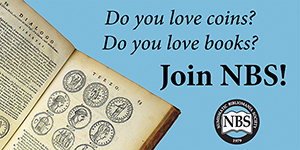
First Edition, 1849
"Foote, H.C. The Universal Counterfeit Bank Note Detector at Sight, A System of Infallible Detection, applicable to all Modern Plates of all banks in the U.S. 1849. 20 pp. Illustrated. Plus a note issued by the company with denomination 3-3 and 20-20 folded in. Beautiful binding with gold lettering. Size 3 x 4 3/4. A little gem. Not in any Bibliographies. Undoubtedly UNIQUE. est. $50."
Katen: George J. Fuld Numismatic Library Part 1: 798 {8/1971}, $60.
Second Edition-Third Thousand, 1850
Foote, H.C. Universal Counterfeit and Altered Bank Note Detector, at Sight: A System of Infallible Detection at sight, applicable to all Banks in the United States, now in circulation, or hereafter issued. Complete in Seven Rules, with Thirteen Diagrams and Seventeen Illustrations on Steel, For Self Instruction. Arranged and Improved by H.C. Foote, New-York. Second Edition. Third Thousand. New York: Oliver & Brother, Book and Job Printers, 99 Nassau Street, corner of Fulton, 1850.
This edition is reprinted in Essay-ProofJournal #167 and 167, 1985. Included is a photograph of the steel engraved bank note facsimile titled "Universal Counterfeit Detector Applicable to all Banks in the United States by H.C. Foote." No sales records are known.
Third Edition-Fourth Thousand, 1851
Foote, H(enry) C. Universal Counterfeit and Altered Bank Note Detector at Sight: A System of Infallible Detection at Sight, Applicable to all Banks in the United States, now in circulation, or hereafter issued. Complete in Seven Rules: Diagrams and Illustrations on Steel for Self-Instruction. New-York: Oliver & Brother, Book and Job Printers, 1851. Third Edition-Fourth Thousand. xi, (1), (13)-36 pp. 14 text engravings of bank note design elements, folding steel-engraved bank note facsimile tipped into the inside front cover. Small 12 mo: 138 x 92 mm. Original paper-backed brown cloth covers, title "Foote's Bank Note Detector at Sight" stamped in gilt on the front cover.
Ex-libris: D.O. Barrett, Tulsa, OK with his book-plate. Sold via Boys Town Library to Orville Grady, then sold to Eric Newman.
Mr. Newman offered it to Wayne Homren. Mr. Homren declined the opportunity, but suggested it be offered to M.J. Sullivan who acquired it 8/92. The plate matches the photograph in Essay-Proof Journal #167, the Steig-Champa plate (see 4th ed., 5th thous.), and the Horstman plate (see 4th ed., 5th thous.).
Fourth Edition-Fifth Thousand, 1853
"Foote, H(enry) C. The Universal Counterfeit and Altered Bank Note Detector, at Sight: A System of Infallible Detection at Sight, Applicable to all Banks in the United States, now in circulation, or hereafter issued. Complete in Seven Rules: with Diagrams and Illustrations on Steel, for Self-Instruction. New York: Mann & Spear, Printers and Stationers. 133 Pearl Street, 1853. Fourth Edition-Fifth Thousand. 36 pp. 14 text engravings of bank note design elements, folding steel-engraved bank note facsimile tipped into the inside front cover. Small 12 mo: 138 x 96 mm. Original paper-backed brown cloth covers, title stamped in gilt on the upper cover."
"The design elements of the facsimile bank note, printed by J. Clark of New York, are keyed to the author's seven rules and 'contain standard specimens of all the different styles of engraving of the notes of all the Banks in the United States.' The Foote work is one of the earliest of the genre and many of his innovations were widely imitated by later publications. By 1853 the work had grown to nearly double the size of the 1849 first edition."
Kolbe: Catalogue of an Exhibition of "Numismatic Americana" comprising Books, Periodicals, Sale Catalogues & Memorabilia from the Library and Collections of ARMAND CHAMPA. Crestline, 1991. Item #22.
Sales Records:
1. Bowers & Ruddy Galleries, Inc. The Michael Steig Collection: 2142 {9/1982}, $88. Sold via John Bergman to Armand Champa. Subsequently sold as Bowers & Merena: The Armand Champa Library Sale Part I: 232 {11/1994}, $467.50.
2. Davis: Fixed Price List Number 17, Numismatic Literature: 1239 {10/1988}, $50. This copy did not include a plate. Purchased by Ron Horstman who matched it with a Foote plate already in his possession.
3. Kolbe: Selections from the American Numismatic Library of John Weston Adams: 412 {6/1990}, $467.50.
With a mere five copies having recorded sales records in 26 years, the Foote is a scarce and desirable counterfeit detector despite the use of "Fifth Thousand" on the title page. If you ever locate a Foote, jump on it! The author will remember Armand Champa for the contribution he made to numismatic literature research. In particular, the contribution he made to initiative interest in collecting and researching counterfeit detector literature. Counterfeit detectors offer the collector a wonderful combination of variety, scarcity, visual graphics, and direct linkage to other syngraphic collectibles to enjoy. The serious collector will have to be patient in acquiring a broad range of counterfeit detector types, titles, and varieties, given their true rarity.
Bowers and Ruddy Galleries, Inc. The Michael Steig Collection, 1982.
Bowers & Merena, Inc. The Armand Champa Library Sale Part 1, 1994.
Davis, Charles. Fixed Price List Number 17, Numismatic Literature, 1988.
Davis, Charles. Mail Bid Sale Catalogue 18, Numismatic Literature, 1989.
Dillistin, William H. Bank Note Reporters and Counterfeit Detectors, 1826-1866. Numismatic Notes and Monographs, No. 114. New York: The American Numismatic Society, 1949.
Ellenbogen, Raphael. "The Celebrated Naramore Bank Note Detector Cards." Paper Money, vol. XXXVI, no. 1, Jan./Feb. 1997.
Essay Proof Journal. Various Issues.
Katen, Frank and Laurese. Public Mail Bid Auction Sale: George J. Fuld Numismatic Library Part 1, 1971.
Kolbe, George F. Selections from the American Numismatic Library of John Weston Adams, 1990.
Kolbe, George F. Catalogue of an Exhibition of "Numismatic Americana" comprising Books, Periodicals, Sale Catalogues & Memorabilia from the Library and Collections of ARMAND CHAMPA, held during the One Hundredth Anniversary Convention of the AMERICAN NUMISMATIC ASSOCIATION in Chicago, Illinois at the Rosemont-O'Hare Conference & Exhibition center, August 13th to August 18th, 1991.
Newman, Eric P. "Heath Counterfeit Detectors: An Extraordinarily Successful Comedy of Errors." ANA Anthology. Colorado Springs, 1991.
Sullivan, Michael J. Bank Note Reporters and Counterfeit Detectors, 1841-1912: An Annotated Bibliography of Original Works in the M.J. Sullivan Collection. Cincinnati, 1997.
